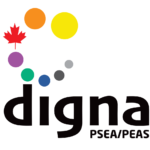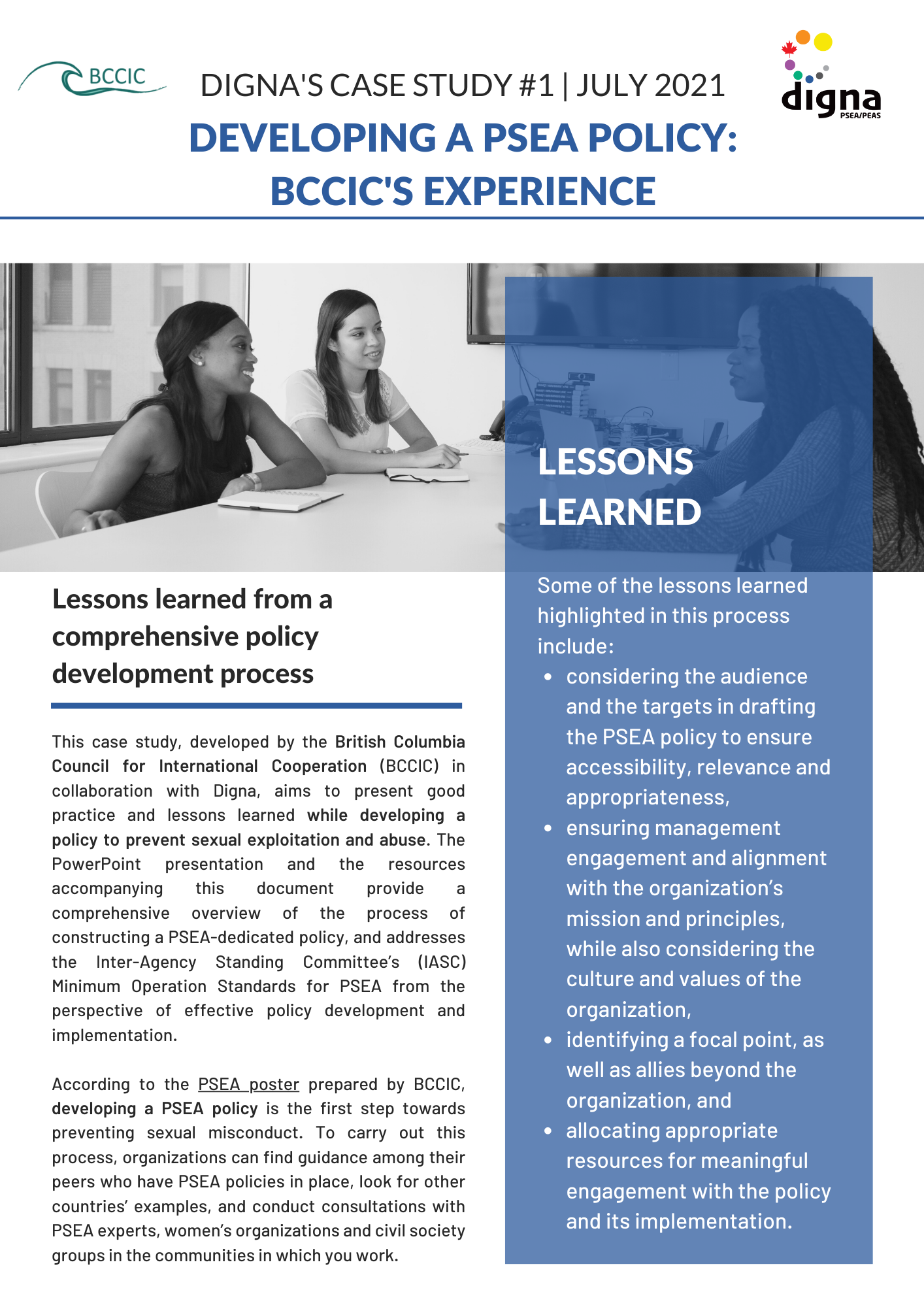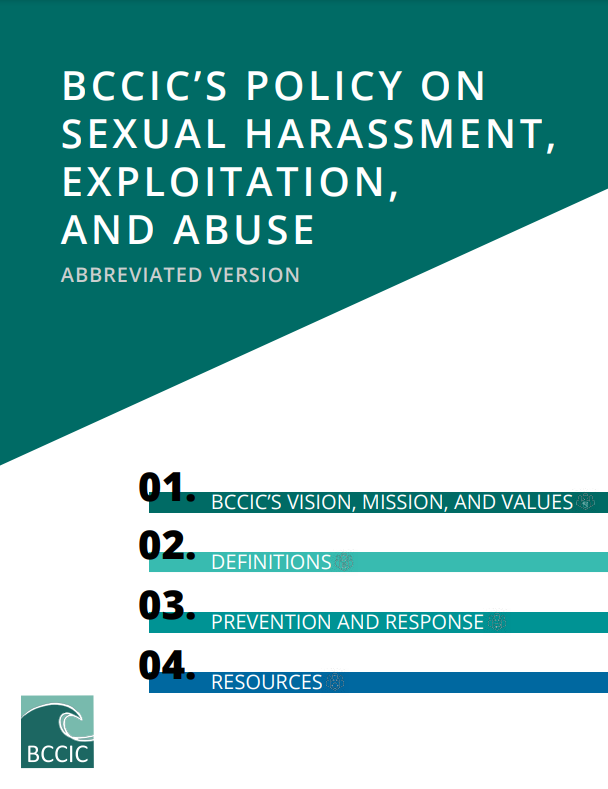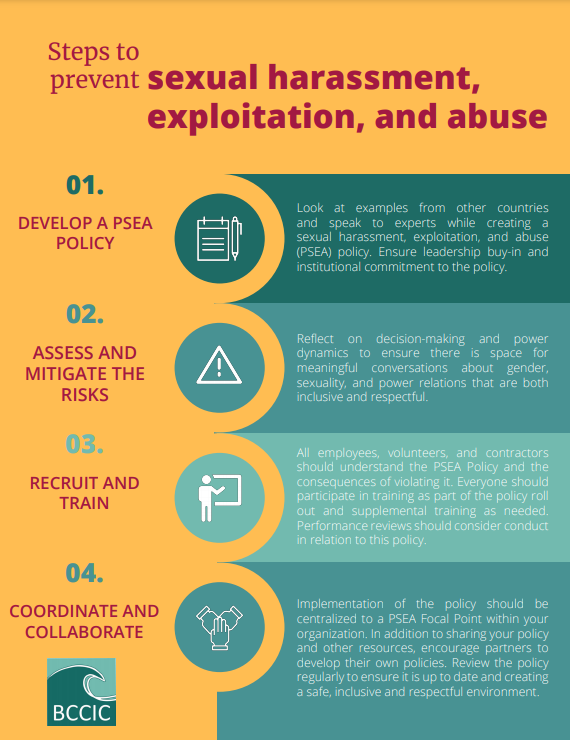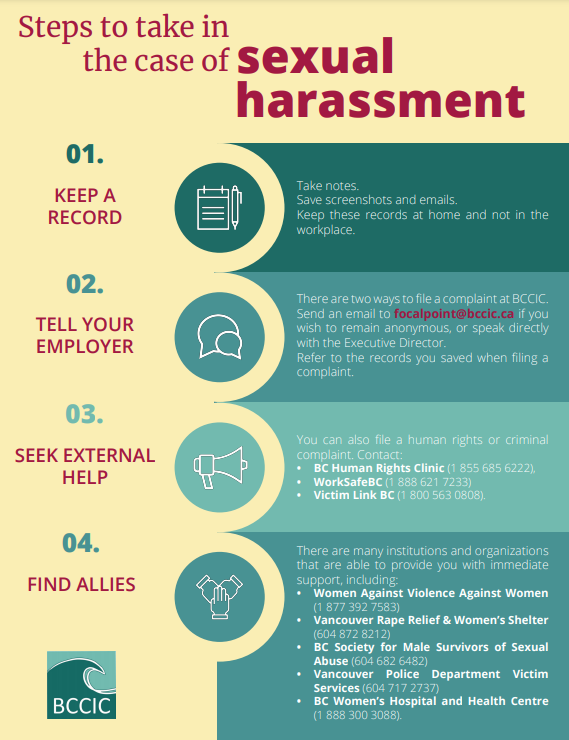Digna's Case Study #1
Developing a PSEA Policy:
BCCIC's Experience
Developing a PSEA Policy:
BCCIC's Experience
This case study, developed by t he British Columbia Council for International Cooperation (BCCIC) in collaboration with Digna, aims to present good practice and lessons learned while developing a policy to prevent sexual exploitation and abuse. The PowerPoint presentation and the resources accompanying this document provide a comprehensive overview of the process of constructing a PSEA-dedicated policy, and addresses the Inter-Agency Standing Committee’s (IASC) Minimum Operation Standards for PSEA from the perspective of effective policy development and implementation.
Lessons learned from a comprehensive policy development process
Developing a PSEA Policy
According to the PSEA poster prepared by BCCIC, d eveloping a PSEA policy is the first step towards preventing sexual misconduct. To carry out this process, organizations can find guidance among their peers who have PSEA policies in place, look for other countries’ examples, and conduct consultations with PSEA experts, women’s organizations and civil society groups in the communities in which you work. In their turn, BCCIC carried out a multi-stakeholder consultation as the very first step before proceeding to the following actions:
-
-
-
-
- policy analysis
- desk review
- informal risk assessment of organizational capacity
- youth engagement, and
- board approval.
-
-
-
Lessons Learned
Some of the lessons learned highlighted in this process include:
- considering the audience and the targets in drafting the PSEA policy to ensure accessibility, relevance and appropriateness,
- ensuring management engagement and alignment with the organization’s mission and principles, while also considering the culture and values of the organization,
- identifying a focal point, as well as allies beyond the organization, and
- allocating appropriate resources for meaningful engagement with the policy and its implementation.
BCCIC’s process for the PSEA policy development also highlighted the importance of clarity around terminology and concepts related to PSEA. This involves recognizing that individual and socio-cultural differences might entail diverse interpretations of key PSEA-related concepts. To address such potentially opposing views, positive behaviour and intercultural communication are encouraged. Another lesson refers to the importance of creating safe and inclusive spaces for open discussion, considering how triggering and sensitive the topics around PSEA may be. Furthermore, BCCIC has recommended engagement with concepts such as ‘power’ and ‘intersectionality’, and the inequalities and barriers that may exist within development organizations and in the communities in which they work, all of which contribute to a heightened risk of sexual exploitation and abuse.
Legal-policy context
A third proposition highlighted in BCCIC’s policy development is the legal-policy context, which includes the international, the federal and the provincial laws and regulations concerning human rights, gender-based violence, criminal codes, among others. While becoming aware of the legal and policy context at different levels, it is important not only to consider the Canadian rules and obligations, but also those of the countries where the organization is working. It is also key to understand organizations’ responsibilities when working with local partners, including the obligation of doing no harm, protecting and promoting human rights. To ensure cohesion, local advice and consultation with local experts is recommended.
Unequal power dynamics
In terms of prevention, the process of creating the policy, getting inspiration in other organizations’ codes of conduct, and assessing and mitigating risks go beyond awareness raising and capacity building. A lesson learned from BCCIC’s experience is the importance of understanding unequal power dynamics, discriminatory, exclusionary and harmful social norms and practices that ultimately lead to social injustice. BCCIC recommends that careful consideration be given to the root causes of marginalization and discrimination (such as patriarchal, colonial and racist biases, norms and practices), and barriers that may place certain individuals and groups at risk of violence as a result of intersecting identities and positionalities. The prevention component of PSEA policies should allow for reflection and an assessment of these power dynamics, as well as taking action to transform them.
Response mechanisms
A PSEA policy should also comprise response mechanisms, including procedures for reporting, conducting investigations, and bringing outcome actions into effect, all of which shouldbe carried out under a survivor-centered approach. Some response-related lessons refer to having effective communication channels and institutional mechanisms in place, to which flow charts and checklists are useful tools for mapping and following process. Other lessons relate to collaboration with local partners, accessibility, and the availability of budget to allow for investigation and response. BCCIC recommends that when thinking through response, efforts should be made to carefully consider the intersecting barriers that survivors may face when reporting abuse and exploitation, as a result of their gender identification and sexual orientation, in intersection with race, ethnicity, indigeneity, diverse abilities, socio-economic status and so forth. Reporting mechanisms will only be effective if they remove these barriers for survivors, and support will only be comprehensive and survivor-centered if they address some of the attitudinal, normative and institutional barriers faced by those left behind.
Monitoring and review
Policies should also include processes for monitoring and review. Some aspects to be taken into consideration include the effectiveness of policies and procedures, how timely responses are, what resources are being made available, and how well the process and actions are communicated both to complainants and respondents. Constant evaluation and review of policies allow for course-correction and improve the effectiveness of PSEA-related procedures within organizations.
Resources
Finally, information is crucial to prevent sexual exploitation and abuse. In this sense, the availability of resources, as well as knowledge sharing, is key. PSEA assessment documents and toolkits should be widely circulated, and some examples of such resources include codes of conduct, partnership agreements, annual training plans, whistle-blowing policies, lists of service-providers, and written processes for review of allegations.
How to work with local communities, members and partners when developing PSEA policies
BCCIC also reflects on how to work with local communities, members and partners when developing PSEA policies and supporting other organizations to develop their own. Highlights include the importance of co-creation in the spirit of decolonization from the perspective of mutual respect and an appreciation of diverse perspectives. Accessibility and inclusion should be prioritized in these processes, as well as considerations being given to relevance and appropriateness. For BCCIC members for example, having simple policies that can be adapted to small and medium sized organizations, and the diverse development and humanitarian contexts in which many work, is an urgent need that will require accompaniment and consideration given to the type and scope of tools and resources that are currently being shared by BCCIC and Digna.
BCCIC has made their PSEA policy (including an abbreviated version) and materials available for public consultation (see below) , which is also good practice so that other organizations can consult and get inspiration for the development of their own PSEA policies .
